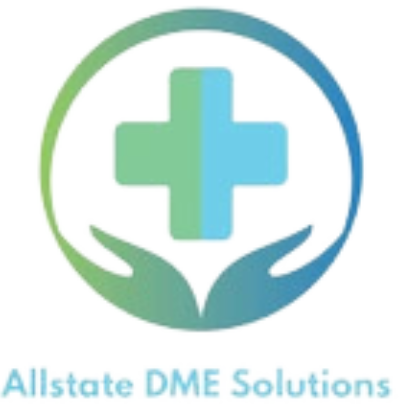
Opening your own pharmacy in the USA can be an exciting and rewarding endeavor. Not only does it offer the opportunity to provide essential healthcare services to the community, but it also presents a promising entrepreneurial venture. However, starting a pharmacy requires careful planning, adherence to regulations, and significant investment. In this article, we will explore the requirements, steps, challenges, and benefits of opening a pharmacy in the USA.
Requirements for Opening a Pharmacy in the USA
Before delving into the process of opening a pharmacy, it’s essential to understand the necessary requirements. First and foremost, you must obtain the appropriate licenses and registrations from the respective state pharmacy board. This includes a Pharmacist License and a Pharmacy Permit, which are vital to legally operating a pharmacy. Each state may have specific eligibility criteria and examination requirements for obtaining these licenses.
In addition to licensing, educational qualifications are crucial. To open a pharmacy, you must have a Doctor of Pharmacy (PharmD) degree from an accredited college of pharmacy. This degree ensures you have the necessary knowledge and expertise to provide pharmaceutical care and manage a pharmacy effectively.
From a business standpoint, you will need to fulfill certain requirements. These may include establishing a legal business entity, such as a corporation or a limited liability company (LLC), and obtaining an Employer Identification Number (EIN) from the Internal Revenue Service (IRS). You may also need to register your pharmacy with the Drug Enforcement Administration (DEA) to handle controlled substances.
Steps to open a pharmacy
Opening a pharmacy involves several steps that require careful planning and execution. Here is a step-by-step guide to help you navigate the process:
- Determine the business structure: Choose the most suitable legal structure for your pharmacy, such as a sole proprietorship, partnership, corporation, or LLC. Consider consulting with an attorney or business advisor to make an informed decision.
- Develop a business plan: Outline your pharmacy’s mission, vision, target market, services, pricing strategy, marketing plan, and financial projections. A well-crafted business plan is essential for securing funding and guiding your business’s growth.
- Secure funding: Determine the initial capital required to start your pharmacy. This includes expenses such as the lease or purchase of premises, equipment, inventory, licensing fees, and marketing costs. Explore financing options, such as business loans, grants, or partnerships, to acquire the necessary funds.
- Find a suitable location: Identify a location that is easily accessible to your target market and meets zoning requirements for a pharmacy. Consider factors such as foot traffic, demographics, competition, and proximity to healthcare facilities. A location near residential areas, medical clinics, hospitals, or senior living communities can potentially attract a steady flow of customers. It’s important to analyze the local market and assess the demand for pharmaceutical services in the area. Additionally, consider the accessibility of parking facilities and public transportation options to ensure convenience for your customers.
- Obtain necessary permits and licenses: Apply for the required permits and licenses to legally operate a pharmacy. This may include obtaining a state pharmacy license, DEA registration, state and local business permits, and any other regulatory approvals. Familiarize yourself with the specific requirements and procedures of your state pharmacy board and other relevant regulatory bodies to ensure compliance.
- Establish relationships with suppliers: Build relationships with pharmaceutical suppliers, wholesalers, and distributors to ensure a consistent supply of medications and healthcare products. Research and negotiate contracts with reliable suppliers to secure competitive pricing and maintain an adequate inventory of prescription drugs, over-the-counter medications, and other related products.
- Hire qualified staff: Recruit licensed pharmacists and other qualified personnel to staff your pharmacy. Ensure that your employees are knowledgeable, customer-oriented, and capable of providing quality pharmaceutical care. Adhere to state regulations regarding pharmacist-to-technician ratios and other staffing requirements.
- Set up inventory and point-of-sale systems: Implement an efficient inventory management system to track and manage your pharmacy’s stock. This includes selecting appropriate software and hardware for inventory control, prescription processing, and point-of-sale operations. Streamline your workflow to optimize efficiency and enhance customer service.
Challenges and considerations
While opening a pharmacy presents lucrative opportunities, there are also challenges to navigate. Some key considerations include:
- Competition from existing pharmacies: Evaluate the competitive landscape in your chosen location. Assess the number and types of pharmacies already operating in the area, as well as their services, pricing, and customer base. Differentiate your pharmacy by offering specialized services, personalized care, or unique products to attract and retain customers.
- Regulatory compliance: Stay up to date with federal, state, and local regulations governing the operation of pharmacies. Comply with laws related to drug dispensing, record-keeping, patient privacy (HIPAA), and controlled substances. Develop robust policies and procedures to ensure compliance and mitigate risks.
- Market analysis and viability: Conduct a comprehensive market analysis to determine the viability and potential demand for your pharmacy’s services. Assess the demographic profile, healthcare needs, and insurance coverage of the local population. Identify any gaps in services or underserved niches that your pharmacy can cater to.
- Insurance and reimbursement: Understand the complexities of insurance plans and reimbursement systems. Establish contracts with insurance providers to ensure seamless billing and reimbursement processes. Stay informed about changes in reimbursement rates, formularies, and regulations to optimize revenue streams.
Benefits of opening a pharmacy
Despite the challenges, opening a pharmacy offers several benefits:
- Serving the community: A pharmacy plays a vital role in providing essential healthcare services to the community. By opening a pharmacy, you can contribute to improving access to medications, providing counseling on medication use, and promoting public health initiatives.
- Entrepreneurial opportunities: Opening a pharmacy allows you to pursue your entrepreneurial ambitions. You have the freedom to shape the business, offer innovative services, and develop strong relationships with your customers. As an owner, you can create a unique brand identity and establish a trusted healthcare presence in your community.
- Potential for growth and profitability: The demand for pharmaceutical services is likely to remain steady or increase, driven by factors such as an aging population, advancements in healthcare, and expanded insurance coverage. With careful planning, effective marketing, and quality service, a well-managed pharmacy
Potential for growth and profitability: The demand for pharmaceutical services is likely to remain steady or increase, driven by factors such as an aging population, advancements in healthcare, and expanded insurance coverage. With careful planning, effective marketing, and quality service, a well-managed pharmacy has the potential for significant growth and profitability.
As the population continues to age, the need for prescription medications and healthcare services is expected to rise. This presents an opportunity for pharmacies to cater to the growing demand. By offering personalized care, medication therapy management, and adherence programs, you can differentiate your pharmacy and attract loyal customers.
Advancements in healthcare, including new drug therapies and treatment options, create opportunities for pharmacies to expand their product offerings and provide specialized services. By staying updated on the latest medical breakthroughs and collaborating with healthcare providers, you can position your pharmacy as a trusted resource for comprehensive healthcare.
Expanded insurance coverage, such as the implementation of the Affordable Care Act in the United States, has increased access to healthcare services for many individuals. This, in turn, drives the demand for prescription medications. By partnering with insurance providers and implementing efficient billing processes, you can maximize reimbursement and ensure financial stability for your pharmacy.
To capitalize on the growth potential and achieve profitability, it’s crucial to develop a strategic marketing plan. Identify your target market and tailor your marketing efforts to reach and engage potential customers. Utilize various channels, such as social media, online advertising, and community outreach, to promote your pharmacy’s services and build brand awareness.
Additionally, prioritize providing exceptional customer service. Focus on building relationships with your customers, understanding their needs, and offering personalized care. This will not only drive customer loyalty but also generate positive word-of-mouth referrals, which are invaluable for the growth of your pharmacy.
Continuously evaluate the performance of your pharmacy, monitor key metrics, and adapt your strategies as needed. Stay informed about industry trends, regulatory changes, and advancements in pharmacy technology. Embrace innovation and explore opportunities to enhance operational efficiency, such as implementing automated prescription dispensing systems or offering telepharmacy services.
In conclusion, opening a pharmacy in the USA requires careful planning, adherence to regulations, and a significant investment of time and resources. However, with the potential for steady growth and profitability, along with the opportunity to serve the community and pursue entrepreneurial goals, opening a pharmacy can be a rewarding endeavor. By providing quality care, staying competitive, and adapting to evolving market trends, you can establish a successful pharmacy business.




